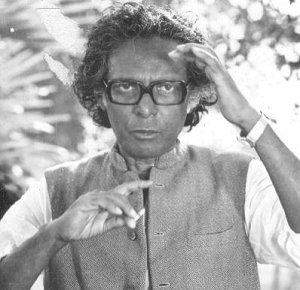Apr 23, 2025
Apr 23, 2025
 The uniqueness of the director Mrinal Sen is that he is the first Indian filmmaker to use multimedia elements in his films. These includes among others, documentary and newsreel footage, stills, ad films, montages, animation, voiceover narration, virtual conversation, radio broadcasts, artworks, cartoons, typed headings, graffiti, innovative sound effects with playful and novel camera techniques, editing (Jump Cuts), textual references, expressionism and symbolism and elements of fantasy neatly woven to break the monotonous storytelling penchant seen in most revered desi filmmakers, seamlessly integrating all these elements into the narrative without ever losing his grip on the core content. In that sense, he is the first ‘Multimedia Artist’ in Indian cinema. The success in incorporating such devices into the filmmaking process can be seen in a film like ‘Padatik’ (The Guerrila Fighter, 1974) where in spite of the work being based on a subject of introspection on the violence of the Naxalites, the film eschews depiction of physical violence on screen conveying the dark times and the mood effectively through some of the above mentioned elements.
The uniqueness of the director Mrinal Sen is that he is the first Indian filmmaker to use multimedia elements in his films. These includes among others, documentary and newsreel footage, stills, ad films, montages, animation, voiceover narration, virtual conversation, radio broadcasts, artworks, cartoons, typed headings, graffiti, innovative sound effects with playful and novel camera techniques, editing (Jump Cuts), textual references, expressionism and symbolism and elements of fantasy neatly woven to break the monotonous storytelling penchant seen in most revered desi filmmakers, seamlessly integrating all these elements into the narrative without ever losing his grip on the core content. In that sense, he is the first ‘Multimedia Artist’ in Indian cinema. The success in incorporating such devices into the filmmaking process can be seen in a film like ‘Padatik’ (The Guerrila Fighter, 1974) where in spite of the work being based on a subject of introspection on the violence of the Naxalites, the film eschews depiction of physical violence on screen conveying the dark times and the mood effectively through some of the above mentioned elements.
24-Jul-2013
More by : Subhajit Ghosh